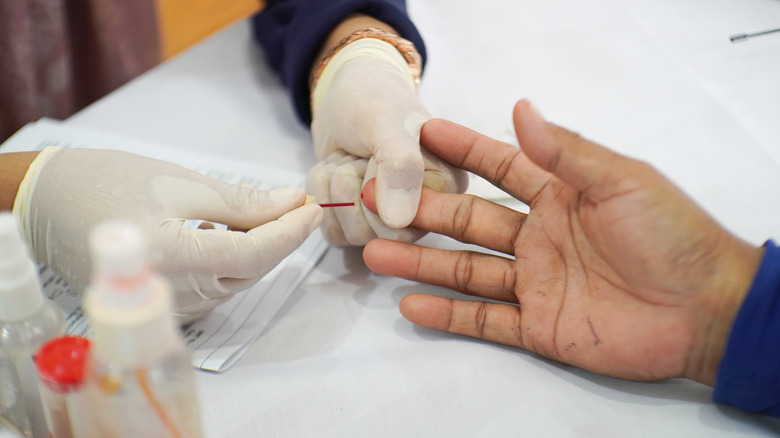The One Major Difference Between Cholesterol Levels In Men And Women
It has been pointed out by experts at Harvard Medical School that a large gap exists between women and men when it comes to health, with men being the weaker sex, at least when it comes to longevity and chronic illness. As they note, this difference is likely dependent on a combination of influences, including biological, social, and behavioral factors.
One among many contributors to this gender divide may be cholesterol levels, they explain, but not in the way you might think. Men and women have similar levels of low-density lipoprotein (LDL) cholesterol (the "bad" cholesterol that clogs arteries and increases your risk for heart disease and stroke). However, the saving grace for women is that they tend to have higher levels of high-density (HDL) cholesterol – 60.3 milligrams per deciliter, on average, compared to 48.5 milligrams per deciliter for men. HDL takes cholesterol from the blood and shuttles it to the liver, where it can be removed from the body. Having higher levels helps lower women's cardiovascular disease risk.
Why there is a gender difference in cholesterol levels
Healthline explains that women typically have higher levels of HDL cholesterol than men, thanks largely to the hormone estrogen. Estrogen helps raise HDL cholesterol levels by stimulating the production of HDL particles and modestly enhancing the liver's expression of LDL receptors, which can reduce circulating LDL cholesterol. This hormonal advantage helps protect premenopausal women from heart disease.
However, this benefit doesn't last forever. As women approach menopause, estrogen levels drop, and with them, HDL levels often decline. At the same time, LDL and total cholesterol levels tend to rise, narrowing the gap between men and women and increasing cardiovascular risk. This shift helps explain why heart disease risk rises sharply for women after menopause, even among those who had healthy cholesterol levels earlier in life.
Cholesterol fluctuations can also occur during different life stages, including pregnancy, when total cholesterol naturally increases to support fetal development. While this is usually temporary, complications such as preeclampsia or gestational diabetes can signal a higher long-term risk of heart disease, according to Healthline.
How to protect your heart health, regardless of gender
The Mayo Clinic says there are several ways to lower cholesterol without medication. Start by eating a heart-healthy diet: reduce saturated and trans fats, add omega-3s, increase soluble fiber, and consider whey protein. Regular physical activity, such as 30 minutes of moderate exercise most days, can raise HDL. Quitting smoking, losing excess weight, and drinking alcohol only in moderation also support healthy cholesterol levels. These changes may reduce your need for medication or boost its effectiveness. However, if lifestyle changes aren't enough, follow your doctor's guidance on cholesterol-lowering drugs.
Because cholesterol patterns in women are closely tied to hormonal changes, it's especially important for women to monitor their levels over time. Routine screening, lifestyle changes, and regular communication with a healthcare provider can help women stay ahead of these shifts and protect their heart health across the lifespan (per Healthline).


